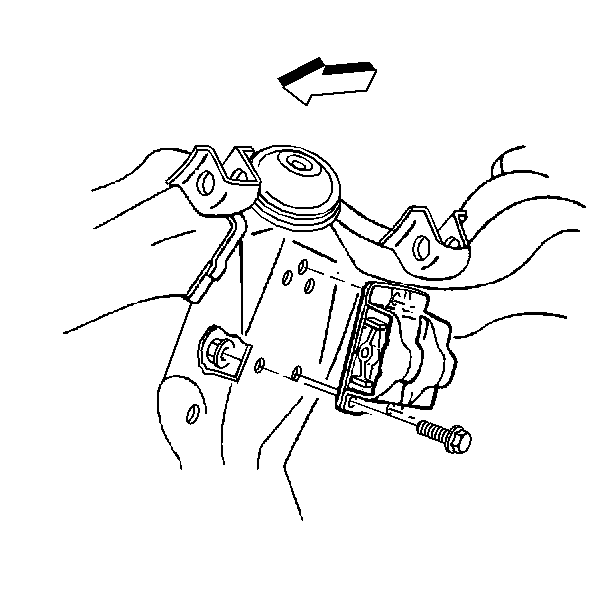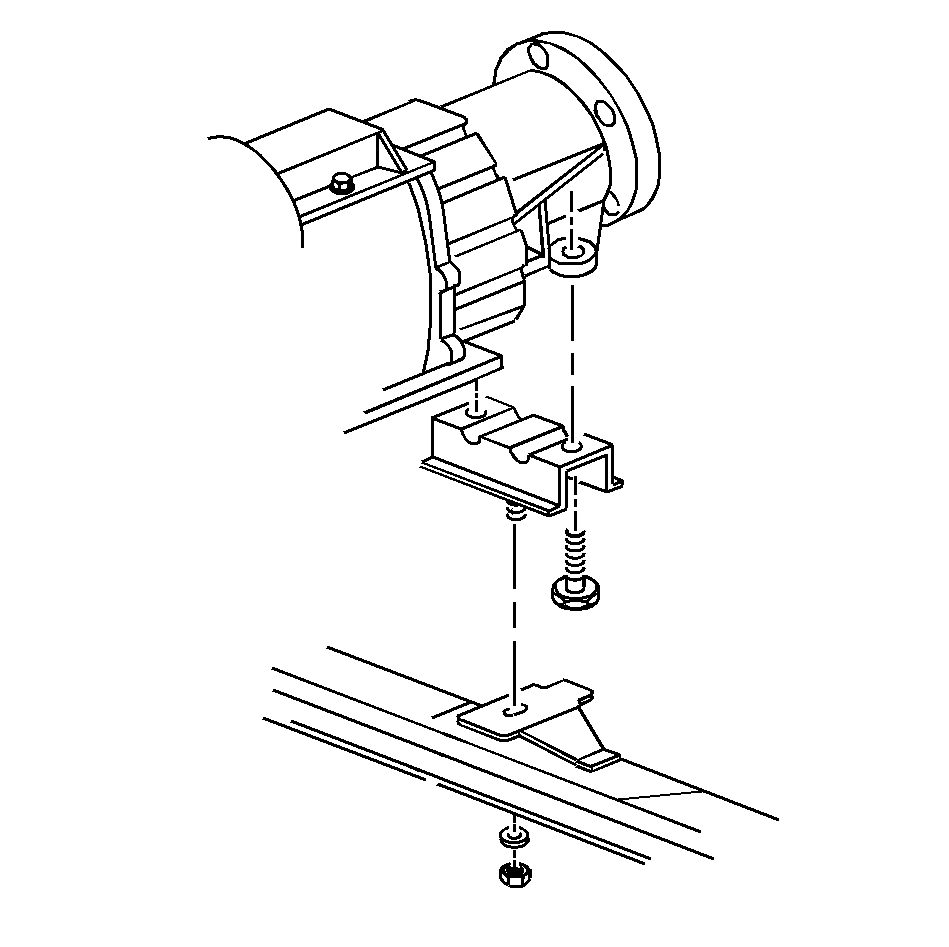Engine Mount Replacement Front
Removal Procedure
- Remove the upper shroud.
- Raise the vehicle.
- Support the vehicle with safety stands.
- Remove the front engine mount through-bolts on both sides.
- Raise the engine and the block into position.
- Remove the lower control arm at the pivot point. Refer to Front Suspension and Axle.
- Remove the front engine mount to frame bolts.
- Remove the front engine mount.
Notice: When raising or supporting the engine for any reason, do not use a jack under the oil pan, any sheet metal, or the crankshaft pulley. Due to the small clearance between the oil pan and the oil pump screen, jacking against the oil pan may cause the pan to be bent against the pump screen. This will result in a damaged oil pickup unit.


Installation Procedure
- Install the front engine mount to the frame.
- Install the front engine mount to the frame with nuts and bolts.
- Lower the engine.
- Install the front engine mount through-bolts.
- Install the lower control arm. Refer to Front Suspension and Axle.
- Install the upper fan shroud.


Tighten
Tighten the nuts to 48 N·m (36 lb ft).
Notice: Use the correct fastener in the correct location. Replacement fasteners must be the correct part number for that application. Fasteners requiring replacement or fasteners requiring the use of thread locking compound or sealant are identified in the service procedure. Do not use paints, lubricants, or corrosion inhibitors on fasteners or fastener joint surfaces unless specified. These coatings affect fastener torque and joint clamping force and may damage the fastener. Use the correct tightening sequence and specifications when installing fasteners in order to avoid damage to parts and systems.
Tighten
Tighten the through-bolts to 95 N·m (70 lb ft)
or the nuts to 70 N·m (50 lb ft).
Engine Mount Replacement Rear
Removal Procedure
- Disconnect the negative battery cable. Refer to
Caution: Unless directed otherwise, the ignition and start switch must be in the OFF or LOCK position, and all electrical loads must be OFF before servicing any electrical component. Disconnect the negative battery cable to prevent an electrical spark should a tool or equipment come in contact with an exposed electrical terminal. Failure to follow these precautions may result in personal injury and/or damage to the vehicle or its components.
- Support the rear of the engine in order to relieve the weight on the rear engine mount.
- Remove the rear engine mount nuts and washers.
- Raise the rear of the engine in order to allow removal of the rear engine mount.
- Remove the rear engine mount.
Notice: When raising or supporting the engine for any reason, do not use a jack under the oil pan, any sheet metal, or the crankshaft pulley. Due to the small clearance between the oil pan and the oil pump screen, jacking against the oil pan may cause the pan to be bent against the pump screen. This will result in a damaged oil pickup unit.


Installation Procedure
- Install the rear engine mounts.
- Lower the rear of the engine.
- Install the rear engine mount bolts and washers.
- Connect the negative battery cable.


Tighten
| • | Tighten the bolt to 47 N·m (35 lb ft). |
| • | Tighten the nut to 47 N·m (35 lb ft). |
Notice: Use the correct fastener in the correct location. Replacement fasteners must be the correct part number for that application. Fasteners requiring replacement or fasteners requiring the use of thread locking compound or sealant are identified in the service procedure. Do not use paints, lubricants, or corrosion inhibitors on fasteners or fastener joint surfaces unless specified. These coatings affect fastener torque and joint clamping force and may damage the fastener. Use the correct tightening sequence and specifications when installing fasteners in order to avoid damage to parts and systems.
